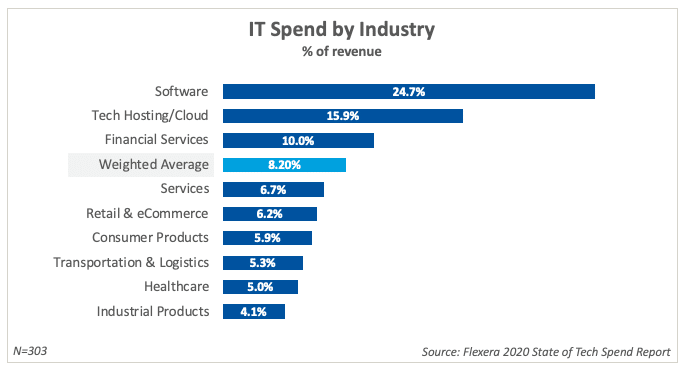According to a research conducted by Expereo, 56% of IT leaders said that they have increased their IT budgets in 2023 despite the economic downturn. Not only that, 32% said that their attitude towards the future is ambitious while 29% of them were optimistic for the next 12 months.
37% said that network performance issues were their biggest connectivity concern. Similarly, expanding connectivity to new markets is also a tough ask for 37% CIOs. Coupled with the restrictions due the use of legacy platforms and systems (35%) and IT leaders have their work cut out.
Ben Elms, chief revenue officer at Expereo provides a solution for businesses. He said, “Businesses must be able to anticipate change and flex, scale, and adapt faster than ever. How? By transforming into cloud-first, data-driven, digital enterprises,This requires a network that is not only optimized for success today, but one that’s future-ready, too—a network capable of keeping up with evolving demands.”
So how can CIOs use the IT budget to get over these challenges? In this article, you will learn about seven technologies IT leaders are spending a major chunk of their IT budget on.
7 Technologies IT Leaders Are Spending Their IT Budget On
Here are seven technologies that IT leaders are spending their IT budget on.
1. Cybersecurity:
Security remains paramount for CIOs, given the escalating frequency and complexity of cyber threats. To counter these risks, organizations are making substantial investments in robust security solutions encompassing advanced threat detection, network segmentation, encryption, and user authentication systems.
2. 5G
42% of IT leaders are willing to spend money on developing their 5G infrastructure in the next 12 months. It should not come as a surprise as the demand for high speed mobile connectivity will lead to a boom in 5G networks. 5G can turbocharge productivity and innovation, speed up issue remediation and unlock the world of new opportunities for businesses and IT leaders are looking to capitalize on it.
On a more technical front, 5G allows low latency and network slicing options to businesses. This means that businesses can create multiple virtual networks with a single physical system. This not only gives you freedom to offer end to end virtual systems fully capable of networking, storage and computation. On the other hand, low latency will empower businesses to deliver a unified and seamless user experience, ensure increased reliability and availability and pave the way for resource intensive applications that demand more networking resources.
3. Artificial Intelligence and Machine Learning
According to the Expereo research, 49% of businesses are finding it tough to identify and hire the right cybersecurity expert for their business. 41% said that they are facing the same dilemma with AI experts. The demand for cybersecurity roles as well as artificial intelligence and machine learning roles is sky high but the supply is scarce. IT leaders should look for ways to close that gap.
One way to close that gap is through sp-skilling their team. Encourage them to learn new skills so they can stay relevant and contribute towards business growth. With talent shortfall widening in the cybersecurity industry, more and more businesses are looking towards automation to fill in this gap. That is where artificial intelligence and machine learning comes into play. In fact, 46% IT leaders are planning to increase the use of artificial intelligence to deliver the talent resources required to accelerate business growth.
4. Data Analytics
Data analytics provides a competitive advantage by unlocking valuable information about customers, market trends, and business performance. IT leaders can leverage this knowledge to enhance customer experiences, tailor marketing strategies, and drive product development.
Additionally, data analytics helps optimize costs and operational efficiency by identifying areas of waste and streamlining processes. It also aids in risk management by detecting anomalies and enhancing security measures. Overall, investing in data analytics equips IT leaders with the tools to capitalize on data’s potential and gain a strategic edge in their industry.
5. Public/Hybrid Cloud:
The adoption of cloud computing continues to grow, with IT leaders focusing on public or hybrid cloud deployments. By leveraging cloud services, organizations can scale their infrastructure such as VPS server Singapore, enhance agility, and reduce operational costs. Investments in cloud infrastructure, migration strategies, and cloud-native applications enable businesses to leverage the benefits of flexible and scalable computing resources, facilitating digital transformation and innovation. You won’t get all these benefits by investing in a cheap dedicated server.
6. Internet of Things (IoT) :
As IoT devices proliferate across industries, IT leaders are directing their IT budgets towards IoT integration and management. Investments in IoT infrastructure, device security, and data analytics platforms enable organizations to harness the power of interconnected devices, optimize workflows, and drive innovation. IoT-enabled solutions offer opportunities for improved asset tracking, real-time monitoring, and predictive maintenance, ultimately enhancing operational efficiency and customer satisfaction.
7. Edge Computing:
The rise of edge computing has gained significant attention from IT leaders, especially in industries that demand real-time processing and ultra-low latency. By decentralizing computing power and bringing it closer to the data source, organizations can improve response times, reduce bandwidth consumption, and enhance security. IT budgets are being allocated to edge computing solutions, including edge servers, gateways, and edge analytics platforms, to enable faster and more efficient data processing.
Conclusion
In an era marked by digital transformation and technological advancements, IT leaders face the crucial task of wisely allocating their IT budgets. By prioritizing security, 5G, AI/ML, automation and analytics, IoT, public/hybrid cloud, and edge computing, organizations can stay at the forefront of innovation, drive operational efficiencies, and remain competitive in an ever-evolving digital landscape. It is essential for IT leaders to carefully evaluate their organization’s needs and align their investments with emerging technologies to harness their full potential.

